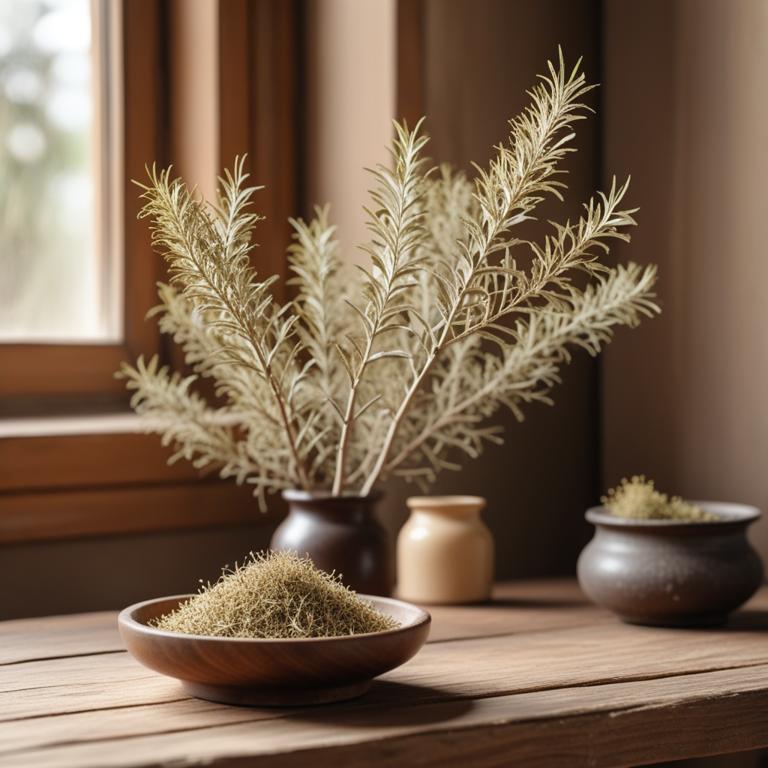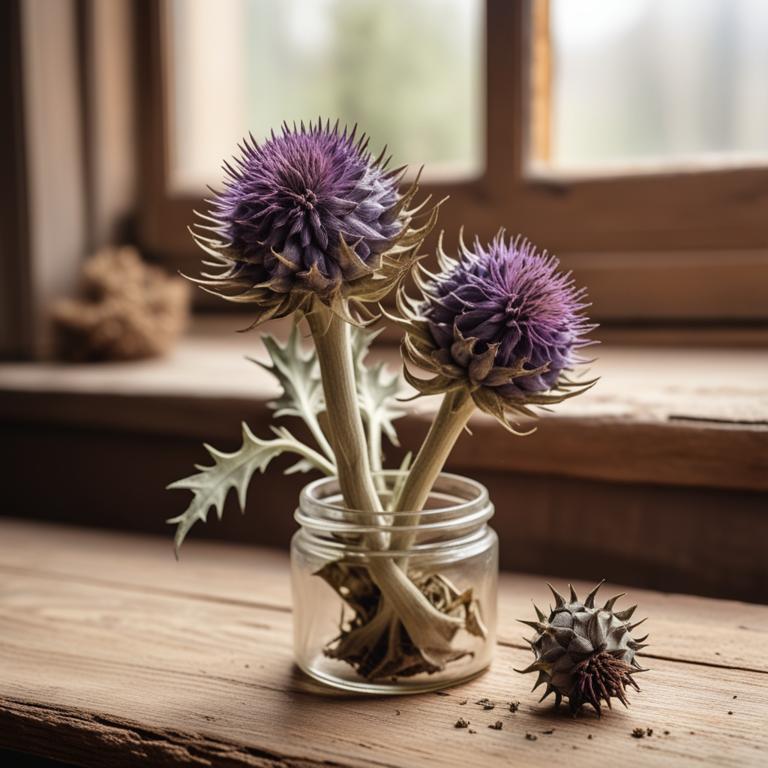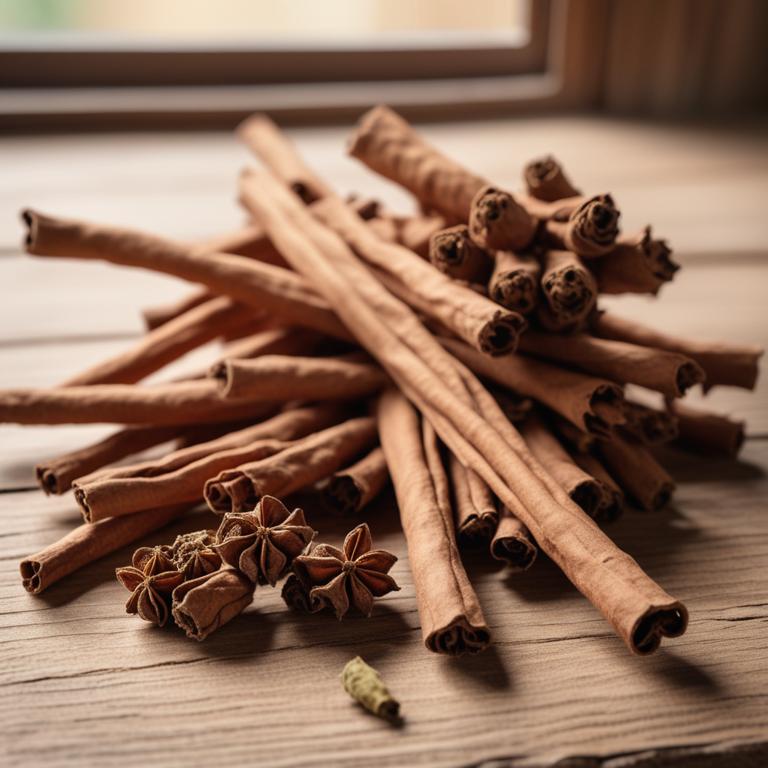Updated: Nov 30, 2024
8 Herbal Essential Oils For Fungal Skin Infection
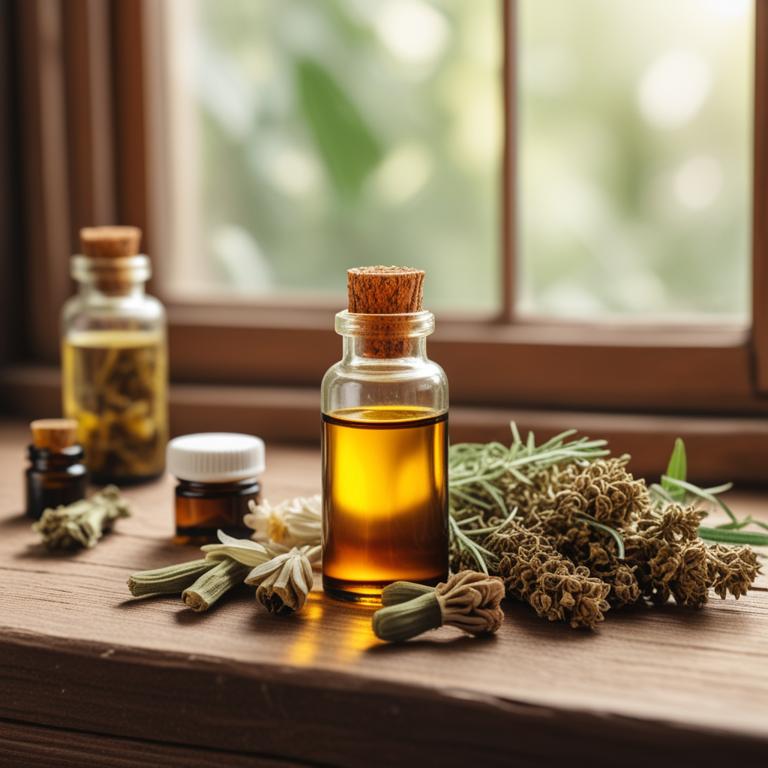
Herbal essential oils can be a great way to help relieve fungal skin infections.
These oils are made from plants that have natural antifungal properties, which can help to combat the infection and promote healing. For example, Melaleuca alternifolia, also known as tea tree oil, is a popular natural remedy for fungal skin infections. It has antibacterial and antifungal properties that can help to kill the fungus causing the infection. Eucalyptus globulus oil is another example of a herbal essential oil that can help to relieve fungal skin infections. It has anti-inflammatory properties that can help to reduce redness and swelling, making it easier to manage symptoms. Eucalyptus oil can also help to promote healing and reduce the risk of scarring. Lavandula angustifolia, or lavender oil, is another herb that can be used to help relieve fungal skin infections.
It has antifungal and antibacterial properties that can help to combat the infection and promote healing. Lavender oil can also help to reduce stress and promote relaxation, which can be beneficial for people who are experiencing symptoms of a fungal skin infection. Using herbal essential oils to relieve fungal skin infections can have several benefits. For one, they can be a natural and chemical-free alternative to traditional treatments, which can be harsh on the skin. They can also be less expensive and more convenient than traditional treatments, and can be used in a variety of ways, such as in a bath or as a topical application. In addition to their antifungal properties, herbal essential oils can also have anti-inflammatory and antiseptic properties, which can help to reduce symptoms and promote healing. They can also be used to promote relaxation and reduce stress, which can be beneficial for people who are experiencing symptoms of a fungal skin infection. It's worth noting that while herbal essential oils can be a helpful addition to traditional treatments, they should not be used as a replacement for medical treatment.
If you are experiencing symptoms of a fungal skin infection, it's best to consult with a healthcare professional for proper diagnosis and treatment.
This article explains in detail what are the best herbal teas for fungal skin infection and wh.
Also, you may be interested in...
Today Free Bonus!
The Ultimate Herb Drying Checklist
(For Long-Lasting Powerful Medicinal Effect)
How to easily dry herbs that don't mold and that keep their strong medicinal power for more than 1 year.
Table of Contents
1. Melaleuca alternifolia
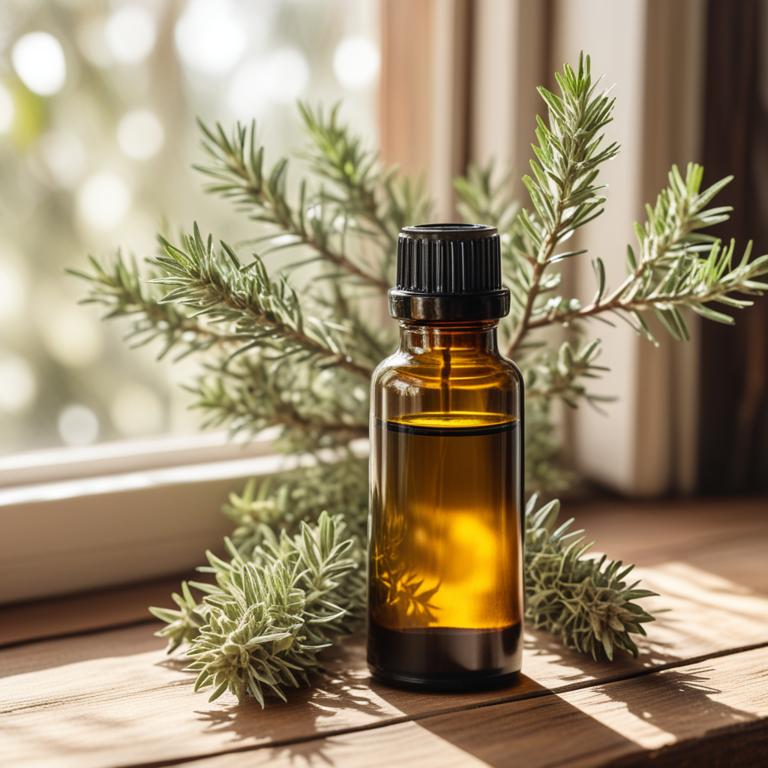
Melaleuca alternifolia essential oils contains compounds such as cineole, terpinen-4-ol, and limonene, which have antimicrobial properties that help combat fungal skin infections.
These compounds work by disrupting the cell membranes of fungal cells, ultimately leading to their destruction. Cineole, in particular, has been shown to inhibit the growth of fungi such as Candida, a common cause of fungal skin infections. Terpinen-4-ol has also been found to exhibit antifungal properties, making it effective against a range of fungal pathogens.
By incorporating Melaleuca alternifolia essential oils into a treatment plan, the antimicrobial properties of its constituents can help to alleviate symptoms and promote healing of fungal skin infections.
- Gather 2 cups of Melaleuca alternifolia leaves, a glass jar with a lid, and a cup of carrier oil like coconut or jojoba oil.
- Wash the Melaleuca alternifolia leaves with 1 cup of water to remove dirt and impurities.
- Combine the washed leaves and carrier oil in the glass jar. Use 1 tablespoon of leaves for every 2 tablespoons of carrier oil.
- Steep the mixture in a cool, dark place for 2-3 weeks, shaking the jar every day. This will help release the essential oil from the leaves.
- Strain the liquid using a cheesecloth or a coffee filter into another container. Discard the solids and store the essential oil in a dark glass bottle.
2. Eucalyptus globulus
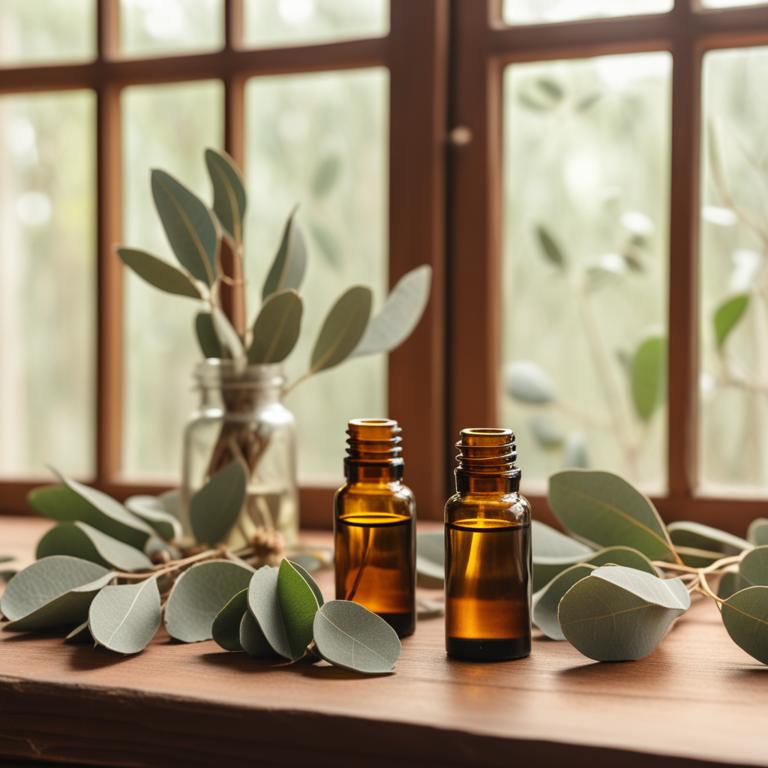
Eucalyptus globulus essential oils contains compounds like cineole, which is known for its antimicrobial and anti-inflammatory properties.
Cineole helps to reduce the growth of fungi that cause skin infections by inhibiting their metabolic processes and preventing them from multiplying. Other active constituents, such as pinene and limonene, contribute to the oil's antifungal activity by disrupting the fungal cell membrane and preventing the formation of new fungal structures. The antifungal properties of Eucalyptus globulus essential oils help to alleviate symptoms of fungal skin infections, such as redness, itching, and inflammation.
By reducing the severity of the infection and promoting a healthy environment, Eucalyptus globulus essential oils can help to support the body's natural healing processes.
- Gather 1 cup of fresh Eucalyptus globulus leaves and 1 cup of water in a saucepan.
- Boil the water, then add the Eucalyptus leaves. Reduce heat and let it simmer for 30 minutes.
- Strain the mixture through a cheesecloth or a fine-mesh sieve into a clean glass container. Discard the solids.
- Let the mixture sit for 2-3 hours to allow the essential oil to separate from the water. Skim off the top layer of essential oil.
- Transfer the extracted essential oil to a dark glass bottle with a tight-fitting lid and store it in a cool, dark place.
3. Lavandula angustifolia
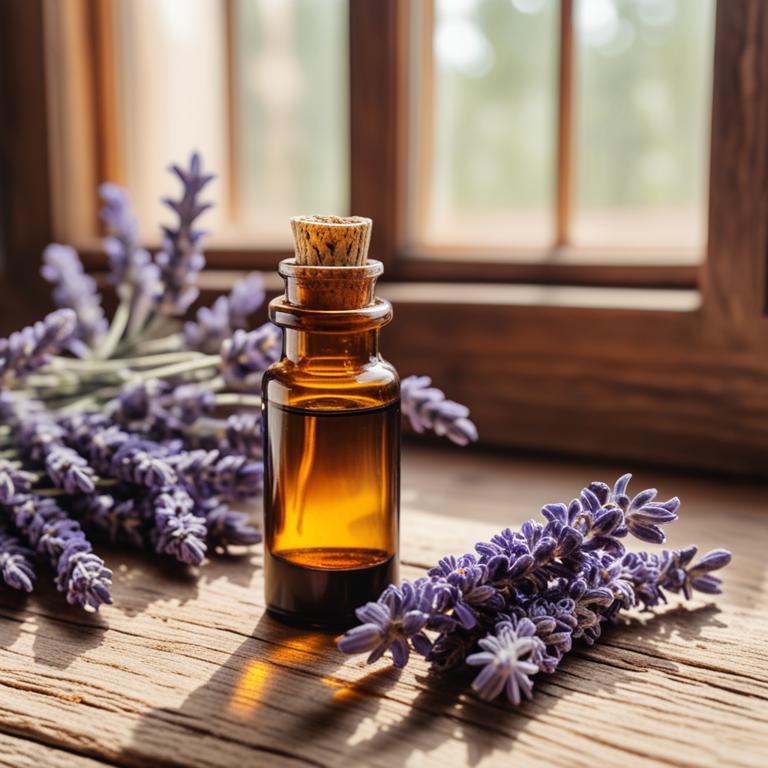
Lavandula angustifolia essential oils contains compounds like linalool and linalyl acetate, which have antifungal properties that help fight fungal skin infections.
These compounds inhibit the growth of fungi and bacteria, reducing the risk of infection and promoting healing. The antimicrobial and antifungal properties of linalool and linalyl acetate also help prevent the spread of infection and reduce inflammation. Additionally, Lavandula angustifolia essential oils has anti-inflammatory properties, which can help soothe and calm irritated skin.
By applying Lavandula angustifolia essential oils topically, it can help reduce the severity of fungal skin infections and promote a healthy balance of skin microbiota.
- Gather 1 cup of fresh Lavandula angustifolia flowers and 1 cup of carrier oil, such as coconut or olive oil.
- Add 10 tablespoons of dried Lavandula angustifolia flowers to a clean glass jar.
- Pour the carrier oil over the dried flowers and close the jar.
- Steep the mixture in a dark, cool place for 2-3 weeks, shaking the jar every day.
- Strain the oil through a cheesecloth or coffee filter into a clean container, discarding the solids.
4. Thymus vulgaris
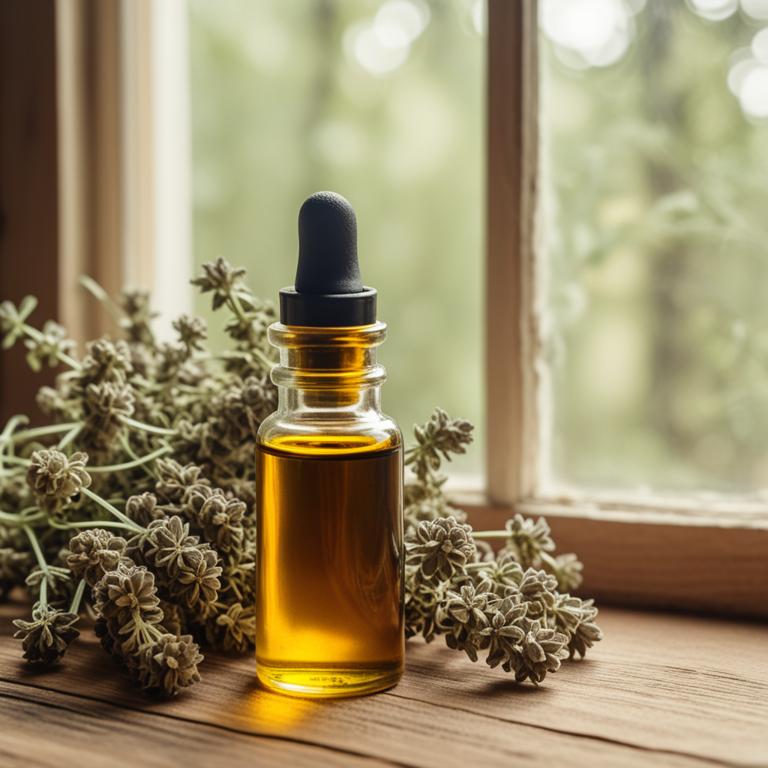
Thymus vulgaris essential oils contains thymol and carvacrol as its main bioactive constituents.
These compounds have antimicrobial and antifungal properties that help combat fungal skin infections. Thymol, in particular, is known for its ability to disrupt fungal cell membranes, ultimately leading to the death of fungal cells. The antifungal properties of Thymus vulgaris essential oils make it an effective treatment for fungal skin infections, such as athlete's foot and ringworm.
Its antiseptic properties also help to prevent the growth of bacteria and other microorganisms that can exacerbate fungal infections.
- Gather 2 cups of fresh Thymus vulgaris leaves, a cup of carrier oil (like coconut or olive oil), and a clean glass jar.
- Wash the Thymus vulgaris leaves with water, then pat them dry with a paper towel.
- Place the leaves in the glass jar and cover them with the carrier oil. Leave about 1 inch of space at the top.
- Steep the mixture in a cool, dark place for 2-3 weeks, shaking the jar every day. After 2-3 weeks, strain the oil through a cheesecloth or coffee filter into another clean glass jar.
- Discard the solids and use the Thymus vulgaris essential oil as needed to treat fungal skin infections. Always dilute the essential oil with a carrier oil before applying to the skin.
5. Cymbopogon citratus
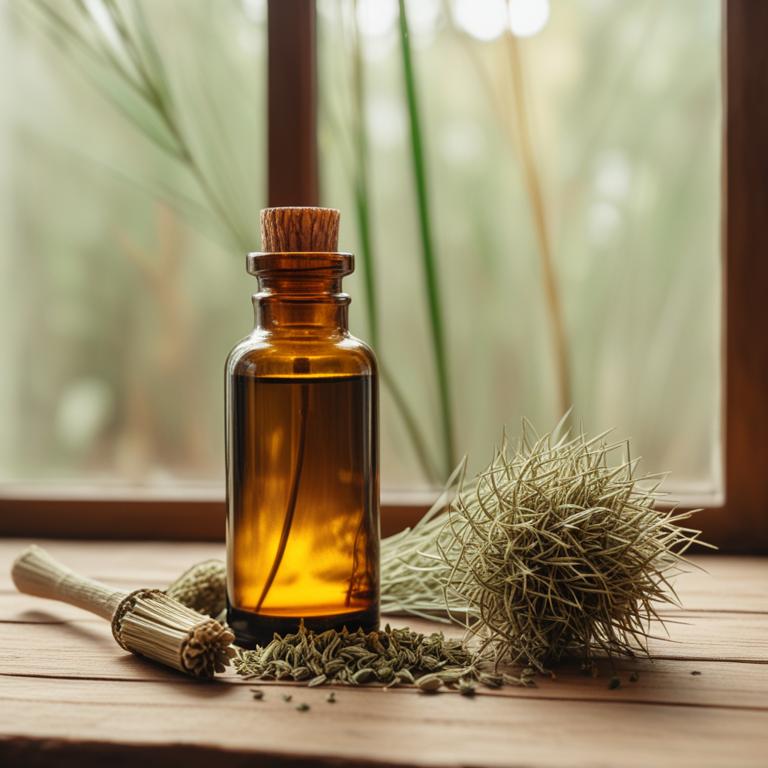
Cymbopogon citratus essential oils contains limonene and geraniol as its active constituents.
These compounds have antifungal and antibacterial properties, which help to combat fungal skin infections by inhibiting the growth of fungi and bacteria on the skin. The antiseptic properties of limonene and geraniol also help to reduce inflammation and prevent further infection. Additionally, the antifungal properties of geraniol help to disrupt the cell membranes of fungal cells, ultimately leading to their death.
By using Cymbopogon citratus essential oils, it is possible to create an environment that is less conducive to the growth of fungi and bacteria on the skin.
- Gather 1 cup of fresh Cymbopogon citratus leaves, 2 cups of water, and a glass jar.
- Wash the leaves with 1 cup of water to remove dirt. Then, add the leaves to the glass jar.
- Add 2 cups of water to the jar, making sure the leaves are covered. Close the jar and let it sit in the sun for 2 days.
- After 2 days, strain the liquid using a cheesecloth or a fine-mesh sieve into another container. Discard the solids.
- Use a dropper to transfer the essential oil into a small glass bottle. Store it in a cool, dark place and use 5-7 drops per application to treat fungal skin infections.
6. Rosmarinus officinalis
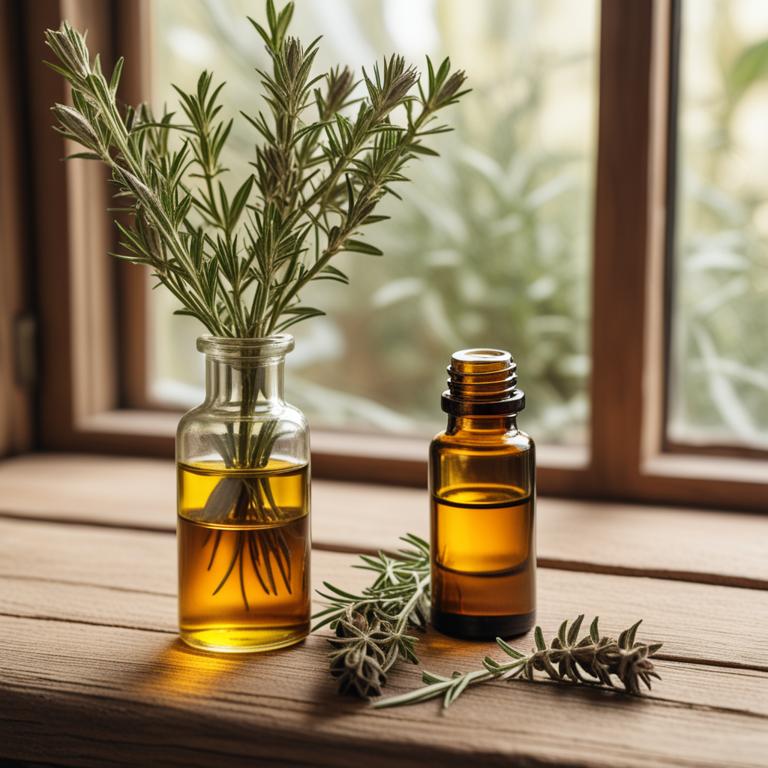
Rosmarinus officinalis essential oils contains camphor, borneol, and bornyl acetate, which have antifungal properties.
These compounds help to inhibit the growth of fungi and reduce inflammation. The antimicrobial and antifungal properties of Rosmarinus officinalis essential oils make it effective against fungal skin infections. The terpenes present in the oil, such as camphor and borneol, also help to reduce redness and itching associated with fungal skin infections.
By using Rosmarinus officinalis essential oils, individuals can potentially alleviate symptoms of fungal skin infections and promote wound healing.
- Gather 1 cup of fresh Rosmarinus officinalis leaves and 4 cups of water.
- Steep the leaves in boiling water for 10 minutes, then let it cool.
- Strain the mixture using cheesecloth or a fine-mesh sieve into a clean bowl.
- Transfer the liquid to a dark glass bottle and add 1 tablespoon of vodka as a preservative.
- Store the bottle in a cool, dark place and use a dropper to apply 2-3 drops to affected skin areas 2-3 times a day.
7. Origanum vulgare
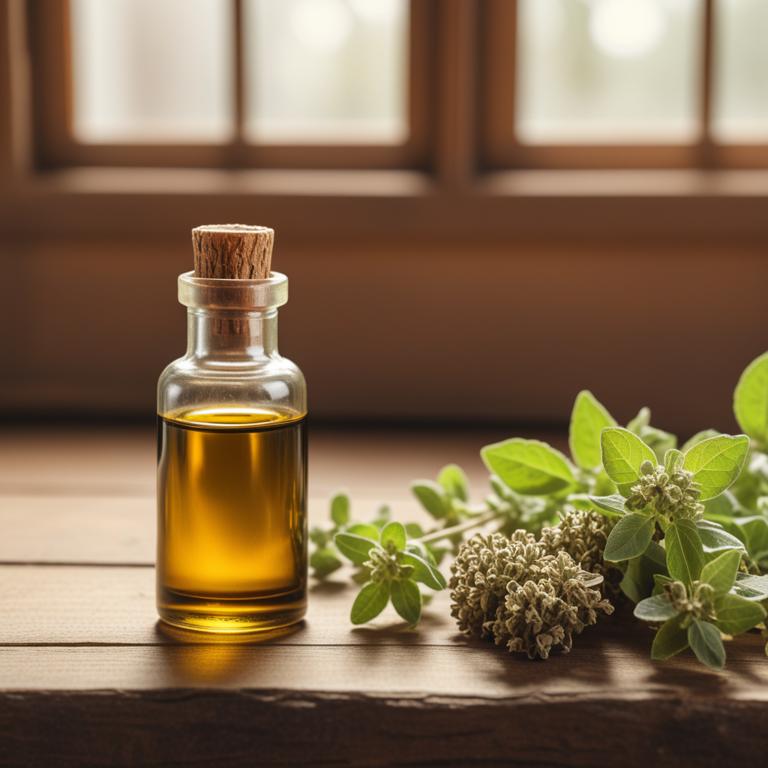
Origanum vulgare essential oils contains a compound called carvacrol, which is known for its antifungal properties.
Carvacrol has been shown to inhibit the growth of fungi, such as Candida, by disrupting their cell membranes. The oils also contain thymol, another compound with antifungal properties, which helps to prevent the spread of fungal infections. The antiseptic and antibacterial properties of Origanum vulgare essential oils, including compounds like borneol, can also help to prevent bacterial infections that often accompany fungal skin infections.
The antifungal and antimicrobial properties of Origanum vulgare essential oils make it a useful natural remedy for treating fungal skin infections.
- Gather 1 cup of Origanum vulgare leaves and 1 cup of carrier oil (coconut or olive oil).
- Chop the Origanum vulgare leaves into small pieces and place them in a clean glass jar.
- Pour 1 cup of carrier oil over the chopped leaves and close the jar.
- Steep the mixture in a cool, dark place for 2-3 weeks, shaking the jar every day.
- Strain the mixture through a cheesecloth into another container and discard the solids. Your Origanum vulgare essential oil is now ready to use.
8. Zingiber officinale

Zingiber officinale essential oils contains a compound called gingerol, which has antifungal properties.
Gingerol inhibits the growth of fungi by disrupting cell membrane function and preventing the formation of new fungal cells. This helps to reduce fungal infections such as athlete's foot and ringworm. Zingiber officinale essential oils also contains other bioactive constituents like zingerone and shogaol, which have anti-inflammatory properties that can help to soothe and calm the skin.
The antiseptic and antibacterial properties of these compounds further aid in preventing secondary infections and promoting a healthy skin environment.
- Gather 2 cups of fresh Zingiber officinale roots, a clean glass jar, and a carrier oil like coconut oil.
- Chop the roots into small pieces and place them in the glass jar.
- Pour 1 cup of carrier oil over the chopped roots, making sure they are completely covered.
- Store the jar in a cool, dark place for 2-3 weeks, shaking it daily to help release the oils.
- Strain the liquid through a cheesecloth or a coffee filter into another clean container, discarding the solids.
FAQ
Can drinking herbal tea prevent fungal skin infection from forming?
Drinking herbal tea may help prevent fungal skin infections by boosting your immune system.
Some herbal teas, like peppermint and ginger, contain antioxidants that fight off germs and promote healing.
These teas can also reduce stress and promote healthy skin, making it less likely to get infected by fungi.
Is it safe to consume herbal teas for fungal skin infection every day?
While some herbal teas, like tea tree oil and echinacea, have antifungal properties that may help soothe fungal skin infections, it's not clear if drinking them daily is safe or effective.
More research is needed to confirm their benefits and potential risks.
It's best to use these teas topically or as directed, rather than consuming them daily.
How long does it take for herbal teas to show results in fungal skin infection?
Herbal teas can help with fungal skin infections, but it takes time to see results.
Some people notice improvement in a few days to a week, while others may take longer, up to two weeks.
It's essential to be patient and consistent with your treatment.
What time of day is best to drink herbal tea for fungal skin infection?
For a fungal skin infection, drink herbal tea in the morning or early afternoon when your body's temperature is naturally higher.
This helps the antifungal properties in the tea work more effectively.
As your body temperature cools down later in the day, the tea's benefits may be less potent.
Related Articles
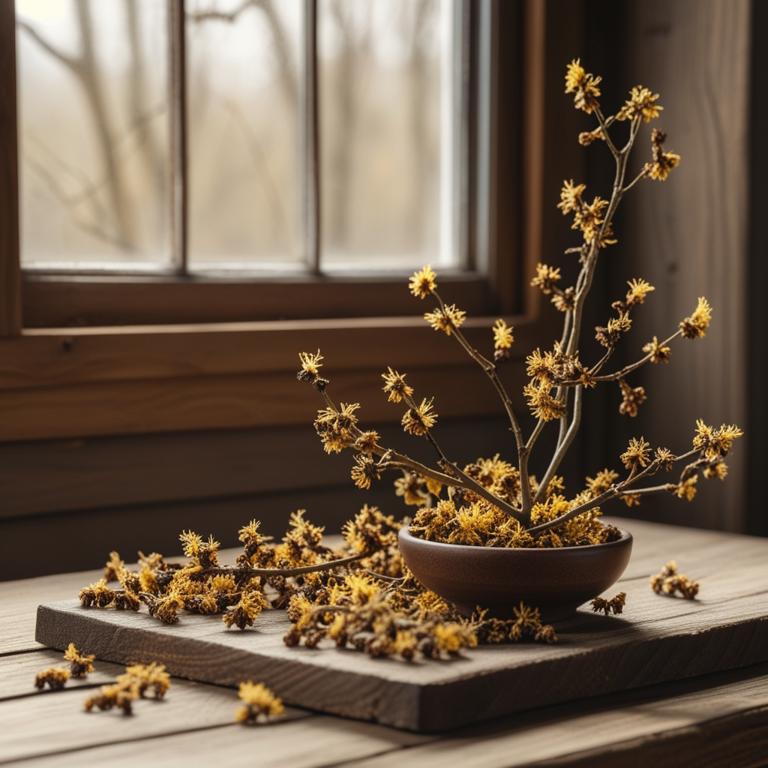
Bruises: Causes, Symptoms, and Herbal Preparations for Relief
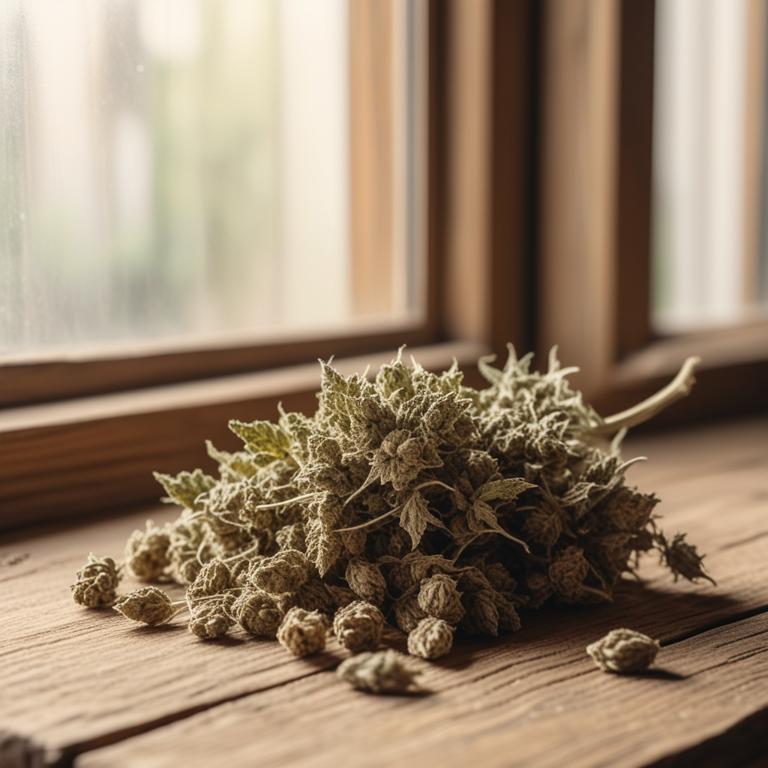
Eczema: Understanding Causes, Medicinal Herbs, and Effective Herbal Preparations
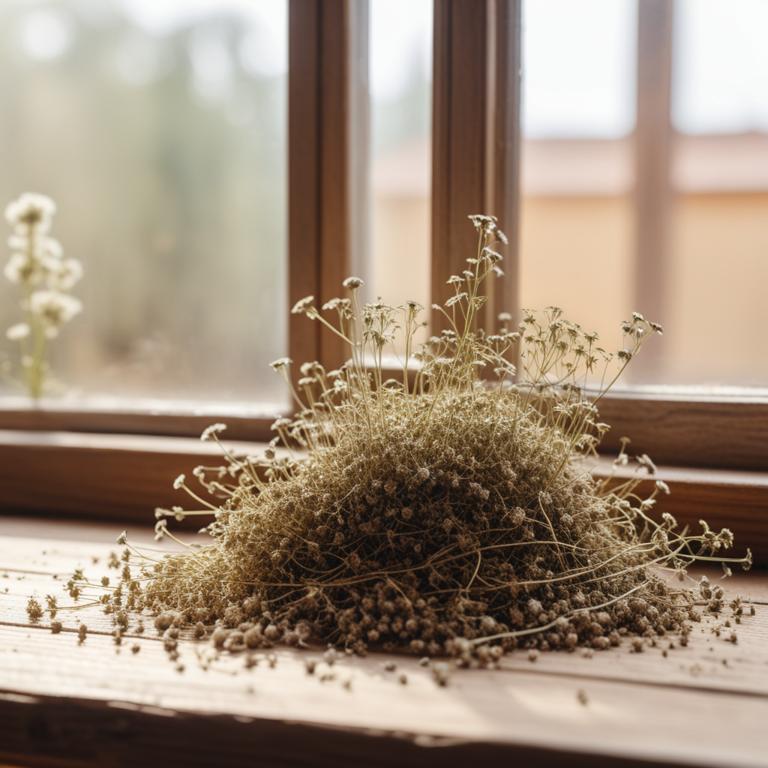
Puffy Eyes: Understanding the Causes and Finding Natural Remedies
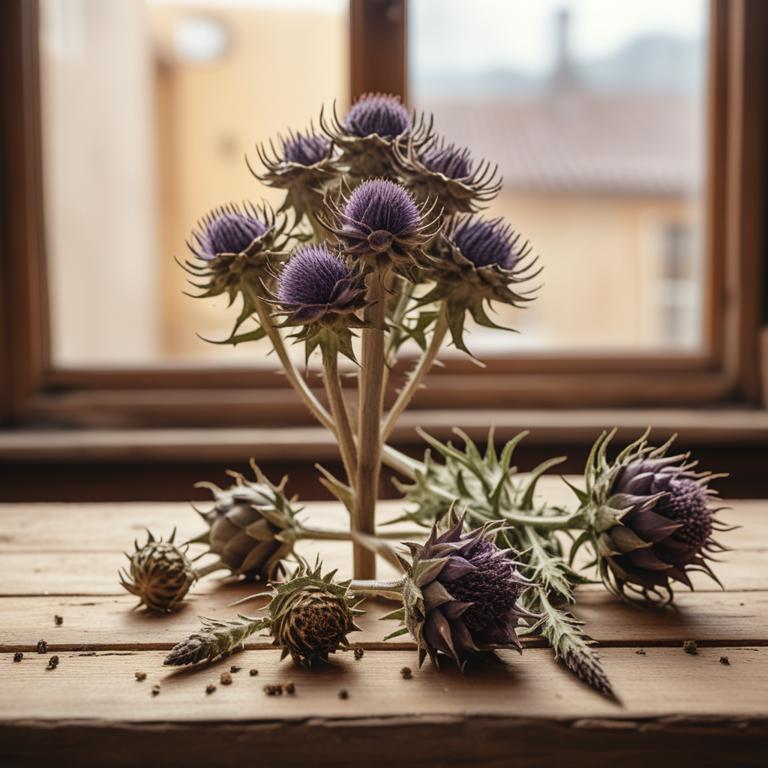
Eye Bags: Causes, Treatment Options, and Medicinal Herbal Remedies
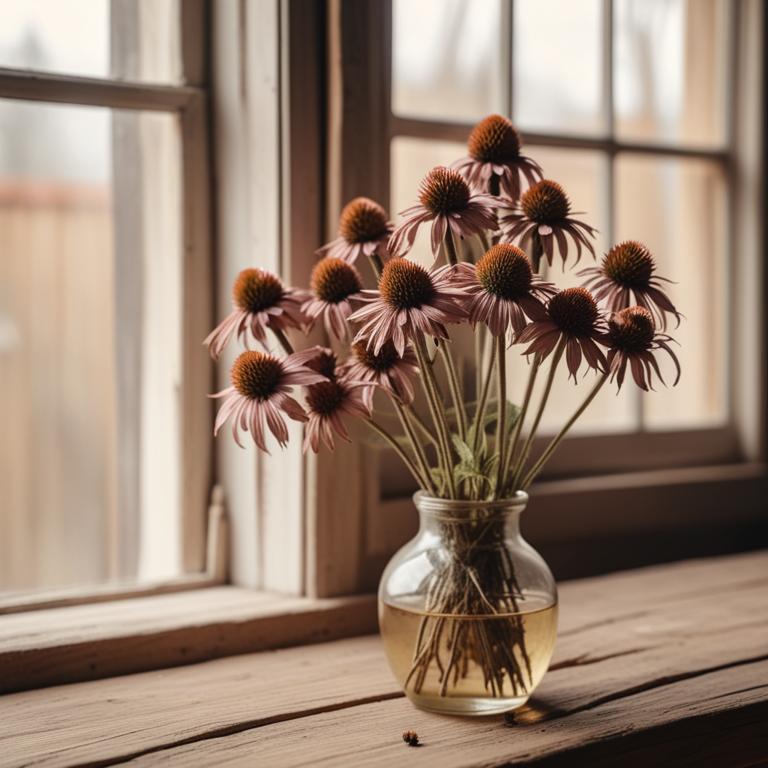
Inflamed Mouth Care: Causes, Medicinal Herbs, and Natural Remedies for Healing
